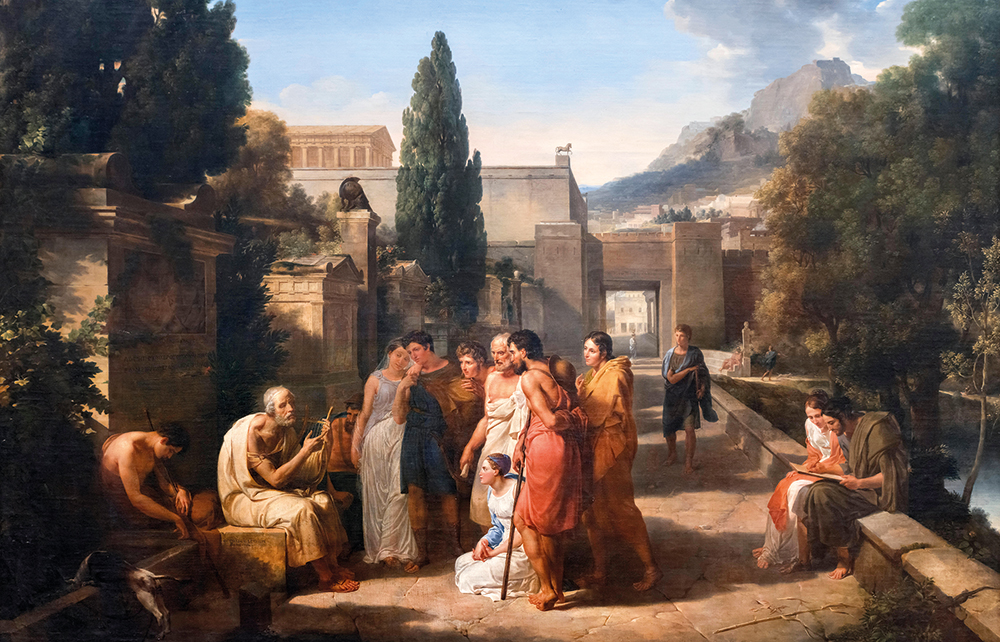There is an ancient comment (on the work of a grammarian with the terrific moniker Dionysius Thrax) that the performers of the Iliad and the Odyssey changed costume according to which poem they were reciting: a dark blue crown for the sea of the Odyssey, red for the blood of the Iliad. Emily Wilson, whose brisk and clear-eyed translation of the Odyssey became a bestseller, has now switched her sea-blue crown for her blood-red one. Even the covers of the two books – the Odyssey had a blue-dominated cover depicting the Minoan fresco of ‘Ladies in Blue’; the Iliad is red and gold, with an image of Thetis giving Achilles his new helmet – reflect the shift.
We tend to think of the Odyssey as the taller tale of the two – full of ogres and witches and sea monsters – and of the Iliad as relentlessly grounded in the dust of battle and the ‘plights and gripes’ of Achilles. But to read (or reread) the poems is to be reminded of how wrong this is. The Odyssean stories of Cyclopes or sirens turn out to be told around the campfire by an expert storyteller, the sole survivor of a shipwreck who has no witnesses to back him up. Odysseus’s real journey is deeper and deeper into the homespun reality of a Greek island only good for raising goats.
The Iliad on the other hand is always stranger than we remember. Achilles, the focal character, may be human, his mortality the essential plot point in this episode from the ninth year of the Trojan war; but he is the son of an immortal mermaid (who sometimes visits him on land in the form of a mist) and was educated by a centaur physician. His war kit is composed of divine gifts, including god-made armour and a pair of immortal horses, one of whom occasionally speaks.







Comments
Join the debate for just £1 a month
Be part of the conversation with other Spectator readers by getting your first three months for £3.
UNLOCK ACCESS Just £1 a monthAlready a subscriber? Log in